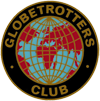Anyone, anywhere in the world, who watched the news during the first half of the 1990s must know about Sarajevo. Sarajevo is the capital of Bosnia and Herzegovina, a small but green and mountainous country with 4 million people, bordered by Croatia to the south and west, and Yugoslavia to the east. The recent war (1992 – 1995) and heavy siege brought unwanted world attention to the city, not to mention approximately 10,500 dead citizens and over 100,000 wounded.
The war is definitely over, and modern day Sarajevo in 2002 has a lot to offer to a tourist. The city itself used to be a “must-visit” destination in the decades before the war, especially if you were visiting Bosnia. After the war, much money has been invested in Sarajevo on improving its infrastructure etc, to encourage the return of tourists, but so far, the visitor figures are disappointing.
Bosnia and Herzegovina is a Western Christian Country with experience of 4 centuries of Ottoman-Turk presence, which made Sarajevo a point where west and east, and north and south meet. Some call the city European Jerusalem, where in a circle of 100 meters one can see several churches, mosques and synagogues together existing and co-existing in peace for centuries. “Equal chances for all” was the motto of the city for centuries, attracting some 10 different religious communities to settle in the city.
There is something to do in Sarajevo all year round. Sarajevo is a big open-air museum, with unique architecture and artefacts from 4000 years of European history. There's plenty to see and do: drink a cold beer in one of the many street cafes, whilst watching the world pass by, one can see: public buildings, squares, fortresses, famous places such as where Archduke Franz Ferdinand was assassinated, igniting WW1, museums, churches, mosques, synagogues, old houses, and much, much more! ATM's are all over the place, as are Internet cafes.
One of the highlights to visit in Sarajevo is the tunnel that was the only supply line during the war for the city and the tunnel museum from the last war. As well as reading and signing the visitor's book, which is almost an historic document in itself, you can actually walk down a small part of the 800 metre long tunnel. You can watch a 20 minute long video, a documentary with real footage from the last war.
Sarajevo was a host to the 14th Olympic games 1984 and has a lot to offer to a winter tourist. Our mountains Igman and Bjelasnica ( 45 minutes by car or bus from city centre) offer skiing 6 months a year with all facilities such as ski-lifts etc. The city is a serious contender for the 2010 Winter Olympics!
Citizens from all of the countries in Western Europe, the U.S.A. and Canada do not need a visa to enter Bosnia and it is easy to get to Sarajevo: 7 international air carriers have routes to Sarajevo, including Austrian Air, Lufthansa, Swiss Air, and Malev. There are also trains and long distance buses connecting Sarajevo with the rest of Europe. These include a daily train from Zagreb, Croatia (9 hrs), and long distance international buses, e.g. from Split (6hrs) and Dubrovnik (5 ½ hrs).
There are hotels to stay, including a phenomenally expensive Holiday Inn. Generally speaking, a room in a modern hotel will cost 45 euros+ (US $45) per person. Staying in a hotel is more or less the same as in any country of the world and is to be recommended only for people that suffer from surplus of money and like being bored. Private accommodation is cheaper, but if your host doesn't speak English too well, and is not officially registered, (proved by ID card with photo + official seal of his/her firm), you'll probably be taken to rooms in some suburb of Sarajevo in a middle of nowhere, apart from being involved in illegal activity. Good hostels or private accommodation in the two main municipalities cost from 15 euros per person.
SARTOUR has a hostel which is situated 10 minutes walk from the historic centre of the city, and offers single, double and triple rooms for 15 euros per person with one of the best views of the city, quiet original Bosnian style atmosphere, and a courtyard and garden for night time schnapps drinking! They can provide services such as English speaking tourist guides for city tours etc. They also offer a big breakfast for 3 euros per person, bike rental, laundry facilities, self-catering, family and group facilities and give our best to make your stay secure and pleasant for fair and reasonable prices. Enjoy a glass or two of our famous Schnapps (plum brandy – 41% alc.), a warm welcome and hospitality.
If you would like to contact Sead to ask him about Bosnia, its history, staying in Bosnia, or touring the area, please e-mail him at: sartour@lsinter.net
Incidentally, all readers of the Globetrotter's E-Newsletter are eligible for a 10 % discount on accommodation in the Sartour hostel, and on tours around the city until 01.01.2003. Next month, the Beetle will be writing about her time in Bosnia.
